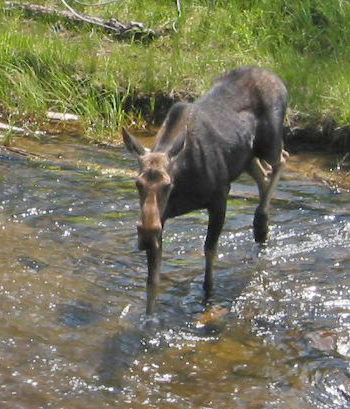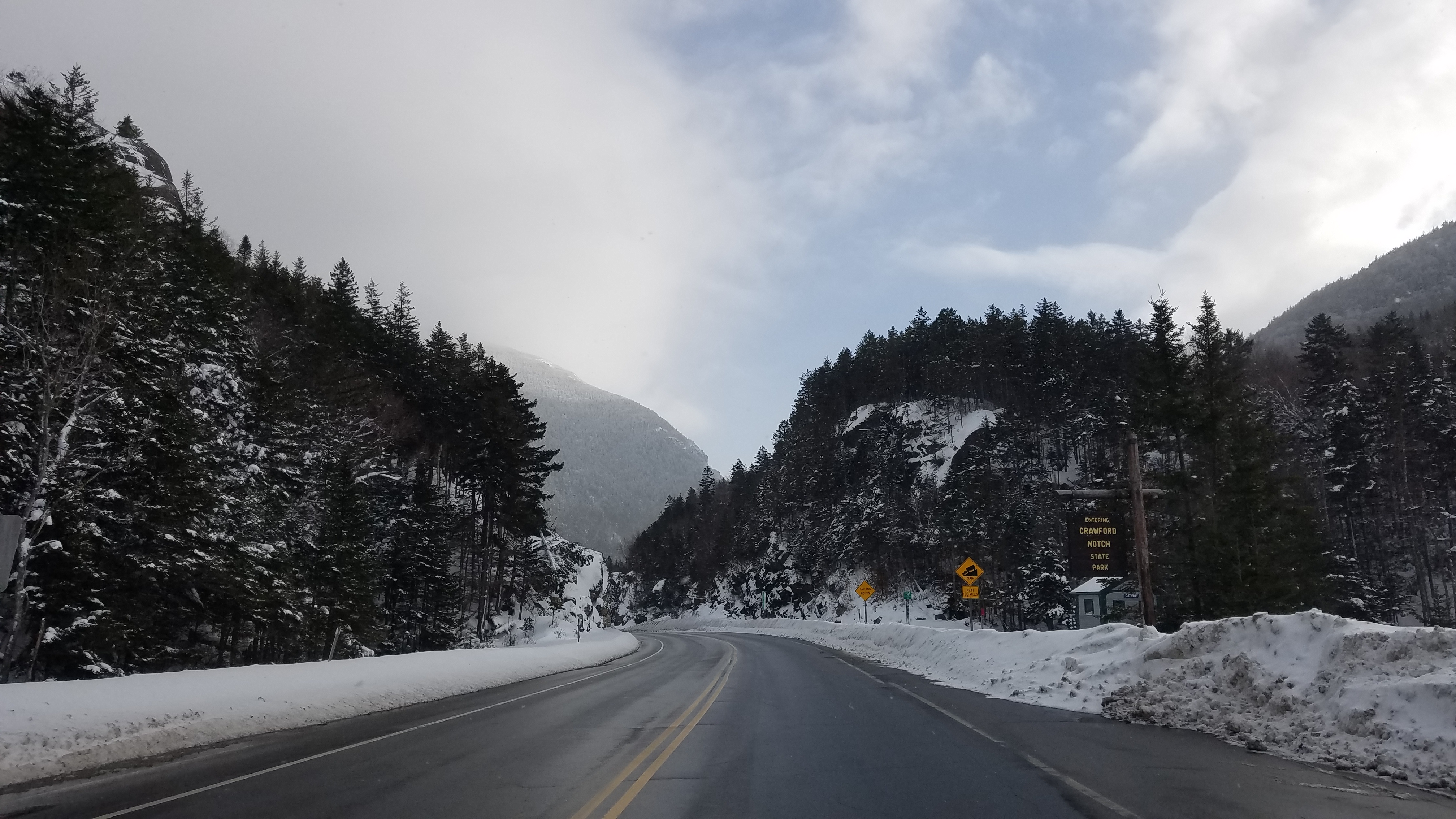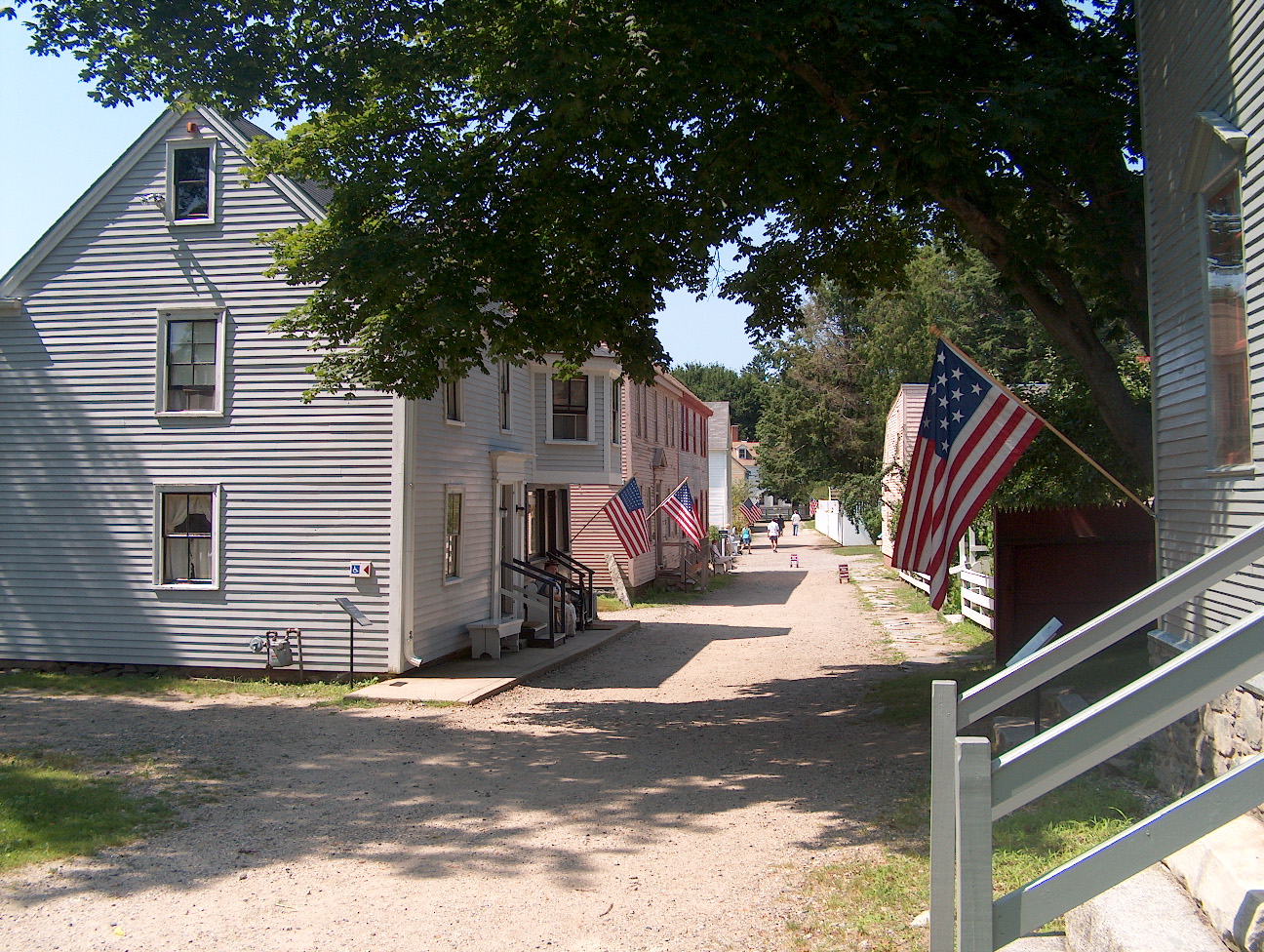|
Hart's Location, New Hampshire
Hart's Location is a town in Carroll County, New Hampshire, United States. Since 1948, the town has frequently been one of the first places to declare its results for the New Hampshire presidential primary and U.S. presidential elections. The population was 68 in the 2020 census. It was incorporated in 1795. Hart's Location maintains a board of selectmen, but is otherwise dependent on the town of Bartlett and Carroll County for services. Home to Crawford Notch State Park, which is noted for its rugged mountain beauty, the town is crossed by the Appalachian Trail. History Hart's Location was named after Colonel John Hart of Portsmouth, New Hampshire. In 1772, the land was granted to Thomas Chadbourne, also of Portsmouth. Native Americans used a trail up the Saco River valley through Crawford Notch, and during the French and Indian Wars, many English captives were taken to Canada that way. Despite this, the pass through the White Mountains was otherwise unknown until ... [...More Info...] [...Related Items...] OR: [Wikipedia] [Google] [Baidu] |
Carroll County, New Hampshire
Carroll County is a county in the U.S. state of New Hampshire. As of the 2020 census, the population was 50,107, making it the third-least populous county in New Hampshire. Its county seat is Ossipee. The county was created in 1840 and organized at Ossipee from towns removed from Strafford County. It was named in honor of Charles Carroll of Carrollton, who had died in 1832, the last surviving signer of the United States Declaration of Independence. Geography According to the U.S. Census Bureau, the county has a total area of , of which is land and (6.2%) is water. It is the third-largest county in New Hampshire by total area. Northern Carroll County is known for being mountainous. Several ski areas, including Cranmore Mountain, Attitash, King Pine, and Black Mountain, are located here. A salient along the northwestern margin of the county runs through Crawford Notch; the northern portion of the salient is within Crawford Notch State Park. Adjacent counties * Co ... [...More Info...] [...Related Items...] OR: [Wikipedia] [Google] [Baidu] |
Bartlett, New Hampshire
Bartlett is a town in Carroll County, New Hampshire, United States. The population was 3,200 at the 2020 census, up from 2,788 at the 2010 census. Bartlett includes the unincorporated community of Glen as well as portions of the communities of Kearsarge and Intervale, which the town shares with the neighboring town of Conway. It is set in the White Mountains and is surrounded by the White Mountain National Forest. It is home to the Attitash Mountain Resort and the Story Land theme park. The main village in town, where 351 people resided at the 2020 census, is defined by the U.S. Census Bureau as the Bartlett census-designated place and is located at the intersection of U.S. Route 302 with Bear Notch Road (Albany Avenue). History Settled after 1769 and incorporated in 1790, the town is named for Dr. Josiah Bartlett, the first chief executive to bear the name "governor", a representative to the Continental Congress, and one of New Hampshire's three signers of the Decl ... [...More Info...] [...Related Items...] OR: [Wikipedia] [Google] [Baidu] |
John Wentworth (governor)
Sir John Wentworth, 1st Baronet (9 August 1737 – 8 April 1820) was the British colonial governor of New Hampshire at the time of the American Revolution. He was later also Lieutenant-Governor of Nova Scotia. He is buried in the crypt of St. Paul's Church in Halifax. Early years Wentworth was born in Portsmouth, New Hampshire, on 9 August 1737. His ancestry went back to some of the earliest settlers of the Province of New Hampshire, and he was a grandson of John Wentworth, who served as the province's lieutenant governor in the 1720s, a nephew to Governor Benning Wentworth, and a descendant of "Elder" William Wentworth. His father Mark was a major landowner and merchant in the province, and his mother, Elizabeth Rindge Wentworth, was also from the upper echelons of New Hampshire society. In 1751, he enrolled in Harvard College, receiving a bachelor's degree in 1755 and a master's degree in 1758. During his time at Harvard, he was a classmate and became a close friend of f ... [...More Info...] [...Related Items...] OR: [Wikipedia] [Google] [Baidu] |
Moose
The moose (: 'moose'; used in North America) or elk (: 'elk' or 'elks'; used in Eurasia) (''Alces alces'') is the world's tallest, largest and heaviest extant species of deer and the only species in the genus ''Alces''. It is also the tallest, and the second-largest, land animal in North America, falling short only to the American bison in body mass. Most adult male moose have broad, palmate ("open-hand shaped") antlers; other members of the deer family have pointed antlers with a dendritic ("twig-like") configuration. Moose inhabit the circumpolar boreal forests or temperate broadleaf and mixed forests of the Northern Hemisphere, thriving in cooler, temperate areas as well as subarctic climates. Hunting shaped the relationship between moose and humans, both in Eurasia and North America. Prior to the colonial era (around 1600–1700 CE), moose were one of many valuable sources of sustenance for certain tribal groups and First Nations. Hunting and habitat loss hav ... [...More Info...] [...Related Items...] OR: [Wikipedia] [Google] [Baidu] |
White Mountains (New Hampshire)
The White Mountains are a mountain range covering about a quarter of the state of New Hampshire and a small portion of western Maine in the United States. They are a subrange of the northern Appalachian Mountains and the most rugged mountains in New England. Several of the higher peaks contain an Alpine tundra. The range is heavily visited due to its proximity to Boston, New York City, and Montreal. Most of the area is public land, including the White Mountain National Forest and a number of state parks. Its most famous mountain is Mount Washington, which is the highest peak in the Northeastern U.S. and for 76 years held the record for fastest surface wind gust in the world ( in 1934). Mount Washington is part of a line of summits, the Presidential Range, that are named after U.S. presidents and other prominent Americans. The White Mountains also include the Franconia Range, Sandwich Range, Carter-Moriah Range and Kinsman Range in New Hampshire, and the Mahoosuc Range str ... [...More Info...] [...Related Items...] OR: [Wikipedia] [Google] [Baidu] |
New France
New France (, ) was the territory colonized by Kingdom of France, France in North America, beginning with the exploration of the Gulf of Saint Lawrence by Jacques Cartier in 1534 and ending with the cession of New France to Kingdom of Great Britain, Great Britain and History of Spain (1700–1808), Spain in 1763 under the Treaty of Paris (1763), Treaty of Paris. A vast viceroyalty, New France consisted of five colonies at its peak in 1712, each with its own administration: Canada (New France), Canada, the most developed colony, which was divided into the districts of Quebec (around what is now called Quebec City), Trois-Rivières, and Montreal; Hudson Bay; Acadia in the northeast; Terre-Neuve (New France), Terre-Neuve on the island of Newfoundland (island), Newfoundland; and Louisiana (New France), Louisiana. It extended from Newfoundland to the Canadian Prairies and from Hudson Bay to the Gulf of Mexico, including all the Great Lakes of North America. The continent-traversing ... [...More Info...] [...Related Items...] OR: [Wikipedia] [Google] [Baidu] |
French And Indian Wars
The French and Indian Wars were a series of conflicts that occurred in North America between 1688 and 1763, some of which indirectly were related to the European dynastic wars. The title ''French and Indian War'' in the singular is used in the United States specifically for the warfare of 1754–1763, which composed the North American theatre of the Seven Years' War and the aftermath of which led to the American Revolution. The French and Indian Wars were preceded by the Beaver Wars. In Quebec, the various wars are generally referred to as the Intercolonial Wars. Some conflicts involved Spanish and Dutch forces, but all pitted the Kingdom of Great Britain, British America, its colonies, and their Indigenous peoples of the Americas, Indigenous allies on one side against the Kingdom of France, French colonization of the Americas, its colonies, and its Indigenous allies on the other. A driving cause behind the wars was the desire of each country to take control of the interior terr ... [...More Info...] [...Related Items...] OR: [Wikipedia] [Google] [Baidu] |
Crawford Notch
Crawford Notch is a major pass through the White Mountains of New Hampshire, located in Hart's Location. Roughly half of that town is contained in Crawford Notch State Park. The high point of the notch, at approximately above sea level, is at the southern end of the town of Carroll, near the Crawford Depot train station and Saco Lake, the source of the Saco River, which flows southward through the steep-sided notch. North of the high point of the notch, Crawford Brook flows more gently northwest to the Ammonoosuc River, a tributary of the Connecticut River. The notch is traversed by U.S. Route 302, which closely follows the Saco River southeast to North Conway and less closely follows the Ammonoosuc River northwest to Littleton. History Originally called White Mountain Notch, it became known to European settlers when found by Timothy Nash in 1771. The 1772 boundaries of Hart's Grant reflected its shape. It was named for the Crawford family, who were trail-builders ... [...More Info...] [...Related Items...] OR: [Wikipedia] [Google] [Baidu] |
Saco River
The Saco River ( , Abenaki: ''Sαkóhki'') is a river in northeastern New Hampshire and southwestern Maine in the United States. It drains a rural area of of forests and farmlands west and southwest of Portland, emptying into the Atlantic Ocean at Saco Bay, from its source.U.S. Geological Survey. National Hydrography Dataset high-resolution flowline dataThe National Map accessed June 30, 2011 It supplies drinking water to roughly 250,000 people in thirty-five towns; and historically provided transportation and water power encouraging development of the cities of Biddeford and Saco and the towns of Fryeburg and Hiram. Samuel de Champlain sailed a portion of the river in 1605 and referred to it as ''Chouacoet'', which he said was the name used by the Wabanaki Confederacy, Almouchiquois people. Various sources also give their name as "Sokoki" (a term also used for the Missiquoi people of western New England) and as being either the ancestors or close relatives of the ... [...More Info...] [...Related Items...] OR: [Wikipedia] [Google] [Baidu] |
Native Americans Of The United States
Native Americans (also called American Indians, First Americans, or Indigenous Americans) are the Indigenous peoples of the United States, particularly of the lower 48 states and Alaska. They may also include any Americans whose origins lie in any of the indigenous peoples of North or South America. The United States Census Bureau publishes data about "American Indians and Alaska Natives", whom it defines as anyone "having origins in any of the original peoples of North and South America ... and who maintains tribal affiliation or community attachment". The census does not, however, enumerate "Native Americans" as such, noting that the latter term can encompass a broader set of groups, e.g. Native Hawaiians, which it tabulates separately. The European colonization of the Americas from 1492 resulted in a precipitous decline in the size of the Native American population because of newly introduced diseases, including weaponized diseases and biological warfare by colonizers, ... [...More Info...] [...Related Items...] OR: [Wikipedia] [Google] [Baidu] |
Portsmouth, New Hampshire
Portsmouth is a city in Rockingham County, New Hampshire, Rockingham County, New Hampshire, United States. At the 2020 United States census, 2020 census it had a population of 21,956. A historic seaport and popular summer tourist destination on the Piscataqua River bordering the state of Maine, Portsmouth was formerly the home of the Strategic Air Command's Pease Air Force Base, since converted to Portsmouth International Airport at Pease. History Indigenous peoples of the Americas, American Indians of the Abenaki and other Algonquian languages-speaking nations, and their predecessors, inhabited the territory of coastal New Hampshire for thousands of years before European contact. The first known European to explore and write about the area was Martin Pring in 1603. The Piscataqua River is a tidal estuary with a swift current, but forms a good natural harbor. The west bank of the harbor was settled by European colonists in 1630 and named Strawbery Banke, after the many wild Fra ... [...More Info...] [...Related Items...] OR: [Wikipedia] [Google] [Baidu] |
John Hart (soldier)
Colonel John Hart (July 8, 1706 – October 30, 1777) was a militia officer during King George's War and the French and Indian War from the Province of New Hampshire. Biography Hart was born in Dover, New Hampshire, to Mary Evans and Captain Samual Hart. He was married three times, to Mary Dennett, Abigal Landale and Sara Savill. Hart served in the New Hampshire Militia during the capture of Fortress Louisbourg from the French in 1745 by a force made up of militia from the New England colonies supported by the Royal Navy and commanded by William Pepperrell. During the French and Indian War, Hart was promoted to colonel and commanded a battalion of the New Hampshire Provincial Regiment that was with General Jeffery Amhearst that again captured Fortress Louisbourg in 1758. Hart's Location, New Hampshire, is named for Colonel John Hart; this land was granted to him for his service during the French and Indian War. He had at least two sons, Captain Thomas Hart and Benjamin ... [...More Info...] [...Related Items...] OR: [Wikipedia] [Google] [Baidu] |









